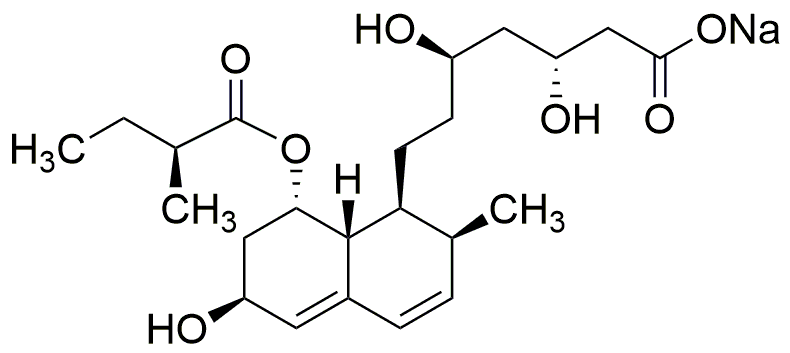Pravastatin sodium is widely utilized in research focused on:
- Cholesterol Management: This compound is primarily used to lower cholesterol levels in patients with hyperlipidemia, helping to reduce the risk of cardiovascular diseases.
- Clinical Studies: Researchers use pravastatin sodium in clinical trials to evaluate its effectiveness in preventing heart attacks and strokes, providing valuable data for future treatments.
- Pharmaceutical Development: It serves as a key ingredient in the formulation of medications aimed at lipid regulation, making it essential for pharmaceutical companies developing new therapies.
- Metabolic Research: Scientists study its effects on metabolism and inflammation, which can lead to breakthroughs in understanding metabolic disorders.
- Patient Compliance Studies: The compound is often analyzed in studies assessing patient adherence to statin therapy, helping healthcare providers improve treatment strategies.
General Information
Properties
Safety and Regulations
Applications
Pravastatin sodium is widely utilized in research focused on:
- Cholesterol Management: This compound is primarily used to lower cholesterol levels in patients with hyperlipidemia, helping to reduce the risk of cardiovascular diseases.
- Clinical Studies: Researchers use pravastatin sodium in clinical trials to evaluate its effectiveness in preventing heart attacks and strokes, providing valuable data for future treatments.
- Pharmaceutical Development: It serves as a key ingredient in the formulation of medications aimed at lipid regulation, making it essential for pharmaceutical companies developing new therapies.
- Metabolic Research: Scientists study its effects on metabolism and inflammation, which can lead to breakthroughs in understanding metabolic disorders.
- Patient Compliance Studies: The compound is often analyzed in studies assessing patient adherence to statin therapy, helping healthcare providers improve treatment strategies.
Documents
Safety Data Sheets (SDS)
The SDS provides comprehensive safety information on handling, storage, and disposal of the product.
Product Specification (PS)
The PS provides a comprehensive breakdown of the product’s properties, including chemical composition, physical state, purity, and storage requirements. It also details acceptable quality ranges and the product's intended applications.
Certificates of Analysis (COA)
Search for Certificates of Analysis (COA) by entering the products Lot Number. Lot and Batch Numbers can be found on a product’s label following the words ‘Lot’ or ‘Batch’.
*Catalog Number
*Lot Number
Certificates Of Origin (COO)
This COO confirms the country where the product was manufactured, and also details the materials and components used in it and whether it is derived from natural, synthetic, or other specific sources. This certificate may be required for customs, trade, and regulatory compliance.
*Catalog Number
*Lot Number
Safety Data Sheets (SDS)
The SDS provides comprehensive safety information on handling, storage, and disposal of the product.
DownloadProduct Specification (PS)
The PS provides a comprehensive breakdown of the product’s properties, including chemical composition, physical state, purity, and storage requirements. It also details acceptable quality ranges and the product's intended applications.
DownloadCertificates of Analysis (COA)
Search for Certificates of Analysis (COA) by entering the products Lot Number. Lot and Batch Numbers can be found on a product’s label following the words ‘Lot’ or ‘Batch’.
*Catalog Number
*Lot Number
Certificates Of Origin (COO)
This COO confirms the country where the product was manufactured, and also details the materials and components used in it and whether it is derived from natural, synthetic, or other specific sources. This certificate may be required for customs, trade, and regulatory compliance.


